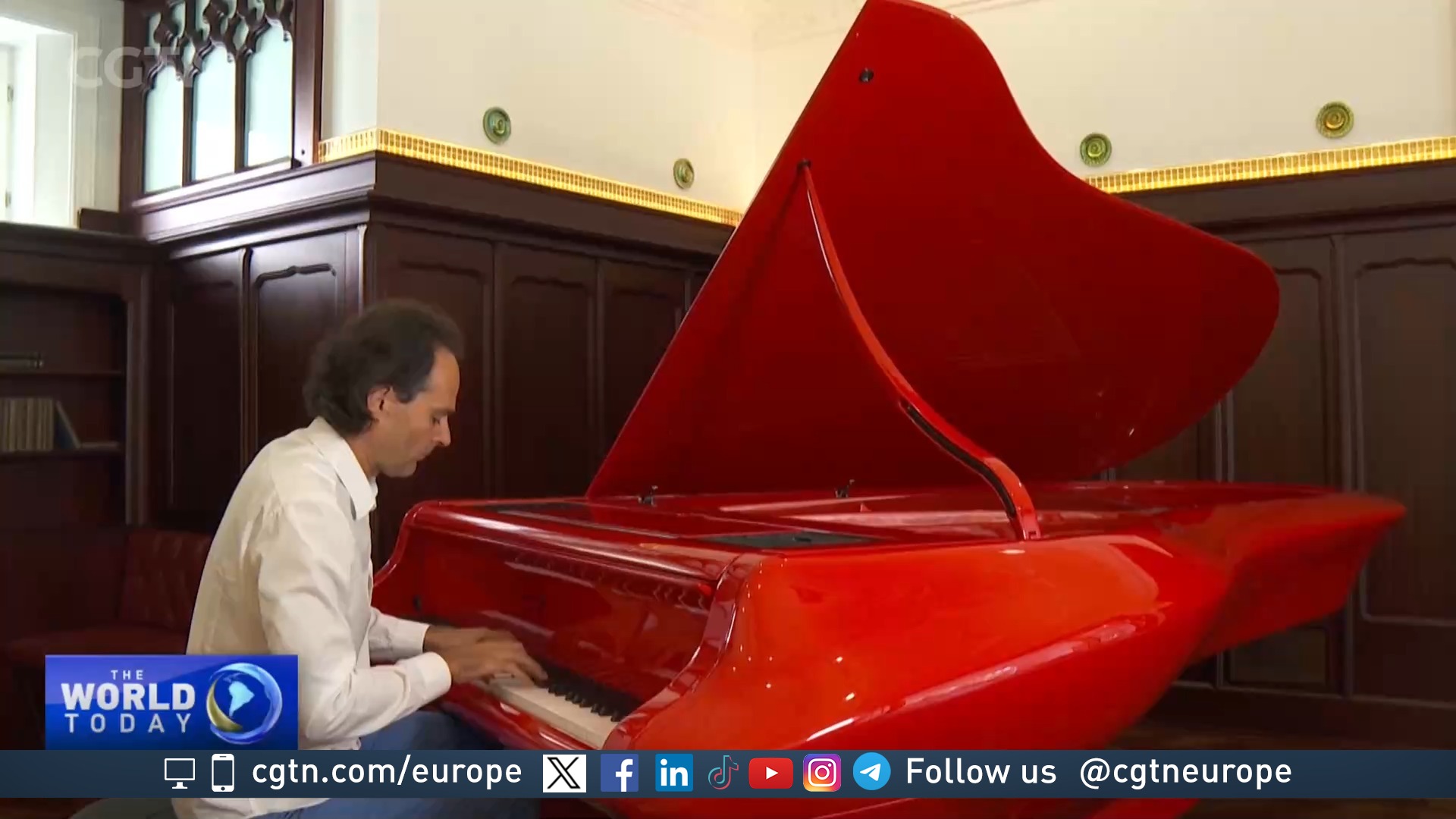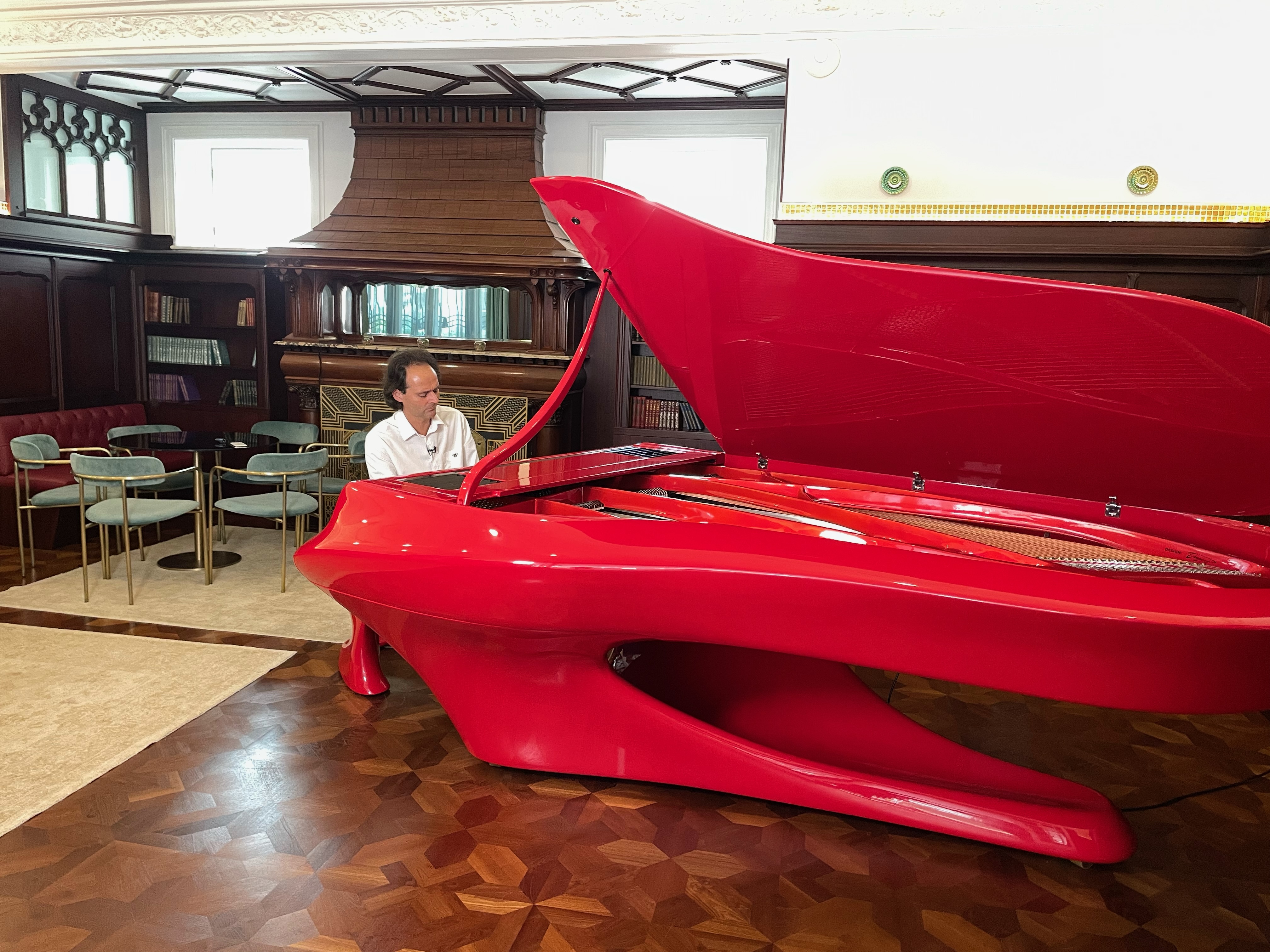02:56

While many everyday items undergo frequent makeovers to align with fashion trends, classical musical instruments have traditionally retained their timeless aesthetics. But in recent years the grand piano has experienced a remarkable transformation, departing from its centuries-old design courtesy of a pioneering Hungarian company.
Globally celebrated pianist Gergely Boganyi embarked on a two-decade-long journey to perfect the grand piano's sound. He scrutinized the instrument's 1,600 components, seeking ways to enhance its performance and radically change how it looks.
READ MORE
Chinese carmakers urged to invest in F1
How greenhouse tech could transform UK food production
Spanish FA President quits over controversial kiss
Boganyi's piano incorporates a weather-resistant composite soundboard in a modified traditional iron-and-wood frame. This innovation ensures a stable, clear sound in all climates and prolonged tuning compared to conventional pianos.

This special piano features a soundboard constructed from carbon fiber, unlike conventional wooden soundboards found in traditional grand pianos. /Pablo Gutierrez
This special piano features a soundboard constructed from carbon fiber, unlike conventional wooden soundboards found in traditional grand pianos. /Pablo Gutierrez
Yet, even to the untrained eye, it's evident that this piano bears no resemblance to its traditional counterparts. Its design draws inspiration from the fluid movements of classical music, featuring elegant curves and clean lines that transform it into a contemporary work of functional art.
"I always felt the desire to improve on the sound, and maybe I'm not the only one in the pianist world because many of us felt that there was something lacking in the pianos," said Boganyi.
He refers to the carbon fiber soundboard as the heart and soul of his pianos since it extends the resonance of the notes played.
"It's a very tricky use of the carbon fiber composite because carbon fiber alone would not work," said Boganyi.
However, it's the external makeover of the piano that first captivates the eye. Resting on just two legs, the new design creates a visual illusion that seems to challenge the laws of gravity.
"I was talking to my designer friend 20 years ago, and I had to make him understand something I didn't even understand verbally. It's incredible. He somewhat understood the message and came up with this incredible design," said Boganyi.
A limited production of just 22 pianos has been completed. One of his pianos was presented to the government of Finland on the anniversary of its independence; the rest are in concert halls around the globe.
"It's a great honor to be the servant of Hungary, Hungarian culture and music in general," said Boganyi.
His company is creating two new compact prototypes, but he insists that the unique sound of his instruments will remain unchanged, guaranteeing that when a pianist plays the keys, and the hammers strike the strings, it will unmistakably carry the Boganyi signature.

Subscribe to Storyboard: A weekly newsletter bringing you the best of CGTN every Friday